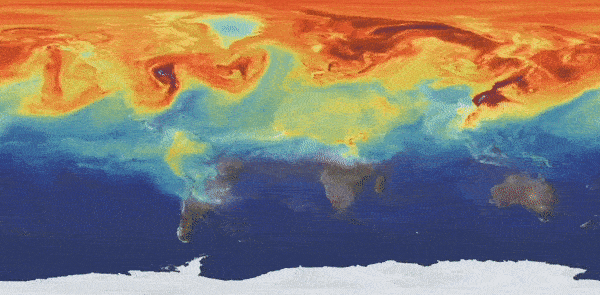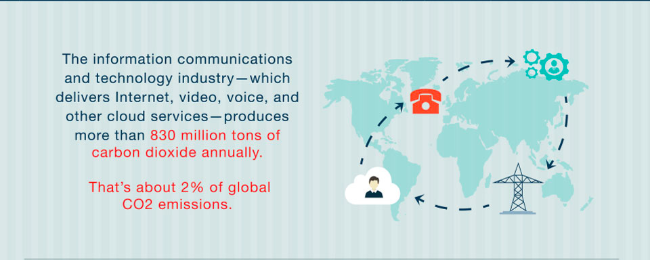The Carbon Footprint of the Internet
March 16, 2020 | Expert Insights

A world that lives and thrives on the internet

The Internet is poised for a huge surge from 4.39 billion now, to almost 7.5 billion in 2030. Across the world, policy framers are propagating more internet adoption to close the gap between the “haves” and “have-nots”
The social and economic benefits of the internet are well pronounced. While health care and retail business, amongst others, have thrived on digitisation, it is without an environmental cost. To most, the internet is synonymous with virtual existence, but in reality, it is based on a physical infrastructure of network cables, data centres and processors. The invisible, inner workings of the internet make it difficult to visualise the digital pollution created by our stored emails.
While the environmental impact due to travel comes under scrutiny, updating one's Facebook account and surfing on the internet are not considered detrimental. This may not be true. The Information Technology Sector, which literally burgeons on the net, is the third-largest consumer of energy after China and the U.S.
The “Cloud” is not ethereal, but a data centre in some part of the world
The “cloud” is a data centre analogous to a factory that stores data. These data centres manage information so that it is readily accessible to users. For example, running a search on Google emits the equivalent of 5 to 7 grams of carbon dioxide.
One of the main forms of digital pollution is called “dormant pollution” which is due to the storage of emails.All emails stored in a mailbox make servers run uninterruptedly in data centres.Data centres are energy-intensive and need to be permanently air-conditioned.The carbon footprint of the internet is 50 percent larger than the global aviation industry and consumes 10 percent of the world's electricity.
Keeping us online guzzles a lot of electricity
Networks are a combination of roads and checkpoints that enable us to stay online at all times. Currently, some of the most energy-intensive components are error-correction data chips, which are semiconductor integrated circuits used to check and correct data transmission errors
Video streaming service Netflix recently released its first environmental, social and governance report. Netflix's global energy consumption increased by 84 percent in 2019, to a total 451,000-megawatt-hours, which is enough electricity to power an average of 40,000 U.S. homes in a year.
The rise of Bitcoin mining is also concerning as this is extremely energy-dependent. Alex de Vries, a bitcoin specialist, estimates that the annual global power consumption of servers that run bitcoin's software adds up to 22 terawatt-hours (TW/h). That is the equivalent of the energy requirement of the entire nation of Ireland.
The greener alternatives
Data on the environmental impact of the internet was hard to find previously because technology companies did not release this information publicly. Fortunately, this has changed as YouTube and Netflix now release data on their energy consumption. Netflix sources all of its electric power from renewable energy. YouTube, hosted by Google, also uses 100 percent renewable energy and is currently investing in more green technologies to power its data centers.
So many more Indians yet to come online
With 451 million monthly active internet users at the end of 2019, India is only second to China, in terms of internet users. According to a report by the Internet at Mobile association of India, the internet penetration in India is a modest 36 percent.
Assessment
As with every other industry, governments need to factor in the environmental costs while furthering its broadband and connectivity goals. There must be transparent guidelines issued to internet providers to make information about their carbon footprint public.
The internet has done away with a lot of plastic use like- CDs, floppy disks, pen drives and non-essential paper use, but this seems to be offset by the carbon footprint from its energy usage. Consumers need not be worried about their consumption patterns but companies must ensure that their data centers are hosted only on green energy.
The internet, whether it is through Industry 4.0, the Internet of Things, or 5G, is the future and it is set to transform the way we live and do business. Like most things in life, the internet too comes at a cost to the environment. However, if we plan and innovate in an effort to keep it green, the harmful effects can be mitigated to a great extent. Though the technology already exists, the will and inclination for the same is required to make a serious impact.
Image Design: Chris Karedan, Synergia Foundation








Comments